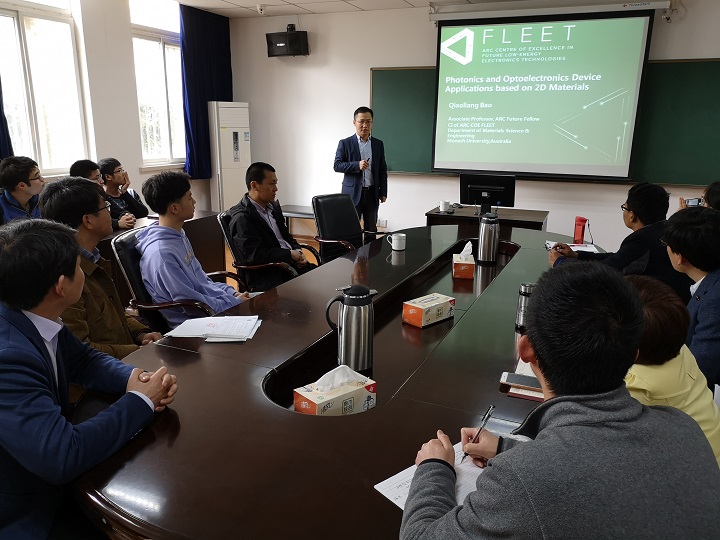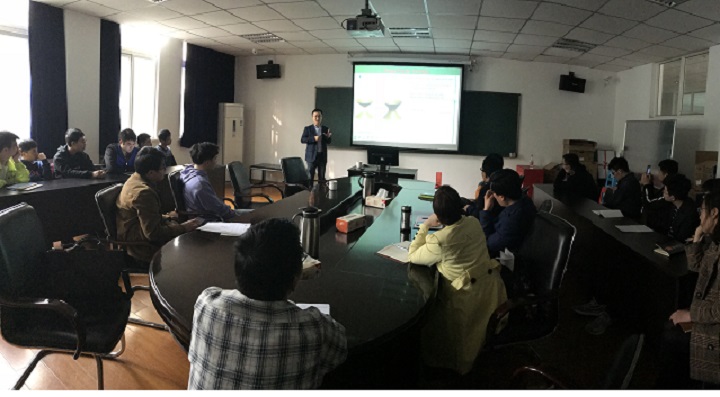莫纳什大学鲍桥梁教授来公司做学术报告
阅读次数: 发布时间:2019-04-152019年4月12日下午15:30,澳大利亚莫纳什大学鲍桥梁教授在bat365在线官网登录入口作主题为“Light-matter Interactions in 2D Materials and Device Applications”的学术报告,报告由董晓臣经理主持。
鲍桥梁教授被称为“二维材料世界追梦人”,报告围绕二维材料光子学与光电器件研究,从基于二维材料的饱和吸收体和光纤激光、二维材料异质结的光电探测器以及二维材料中的极化激元等方面展开。鲍桥梁教授坚持要做有实际应用的研究,坚持做能为社会带来福祉的研究。物理系师生现场聆听学术报告并积极发言,与鲍桥梁教授进行了深入的学术交流。
通过此次高质量报告,数理学院师生受益匪浅,对自身科研发展有了更高的定位,对学院学科发展方向有了更加明晰的认识。


鲍桥梁教授简介:
Dr. Qiaoliang Bao received his Bachelor (2000) and Master (2003) degree from School of Materials Science and Engineering, Wuhan University of Technology, and Ph. D degree from Department of Physics, Wuhan University (2007). From 2006 to 2008, he studied at Nanyang Technological University as a visiting student and research associate. From 2008 to 2012, he worked as a postdoctoral fellow in Graphene Research Centre, National University of Singapore (NUS). He was enrolled into China Thousand Youth Talent Program in 2012. He obtained ARC Future Fellowship in 2016 and is now a tenured Associate Professor at Department of Materials Science and Engineering, Monash University, Australia. He is one of the 20 lead Chief Investigators of the Australian Research Council Centre of Excellence in Future Low-Energy Electronics Technology (ARC COE FLEET). He is also one of Chief Investigators in ARC Industry Transformation Hub for Nanoscience based Construction Material Manufacturing. He has authored or co-authored more than 190 refereed journal articles with more than 20,000 total citations and an H-index of 60 (Google Scholar). Dr. Bao has >30 highly cited publications according to the latest data in Web of Science, and he is listed as 2018 Highly Cited (HiCi) researcher by Clarivate Analytics. His research involves the investigation of waveguide-coupled 2D semiconductors and polariton-coupled 2D materials and devices, focusing on the effect of confined-space light-matter interactions on the transport of electrons or other quasi-particles such as plasmon polariton, exciton polarition and phonon polariton.
(作者:王涛 审核:王超)
